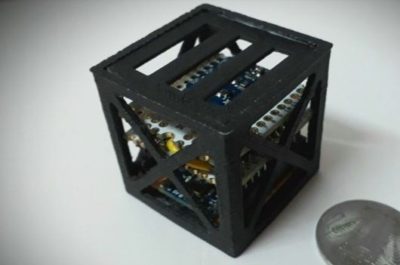
An Indian teen has made the country proud by building the world’s lightest and smallest satellite for the American Space Agency NASA. Dubbed KalamSat, this satellite was created via 3D printing and is named after India’s former president and nuclear scientist, APJ Abdul Kalam.
Rifath Sharook, 18, comes from Tamil Nadu’s Pallapatti area, and his satellite weighs just 64 grams. This satellite will be launched on June 21 from Wallops Island. According to Rifath, his satellite’s mission will last for just 240 minutes post launch. The little satellite will operate for 12 minutes in a micro-gravity environment of space.
“The main role of the satellite will be to demonstrate the performance of 3-D printed carbon fibre,” Rifath told TOI.
Rifath’s satellite was selected in ‘Cubes in Space’ competition, in which the main challenge for the participant was to design an experiment able to be sent to space that weighs exactly 64 grams and fits into a four-metre cube. The competition was jointly organized by NASA and an organisation called ‘I Doodle Learning’.
“We did a lot of research on different cube satellites all over the world and found ours was the lightest,” he said.
According to Rifath, the satellite was mainly made of reinforced carbon fibre polymer.
“We obtained some of the components from abroad and some are indigenous,” he said.
Rifath revealed that the satellite was designed completely from scratch. It features eight indigenous built-in sensors to measure acceleration, rotation and the magnetosphere of the earth. It also has a new kind of on-board computer.
Rifath works as scientist at Chennai-based Space Kidz India, an organization promoting science and education for Indian children and teenagers. Rifath had earlier built a helium weather balloon, at the age of 15, as part of nationwide competition for young scientists.
